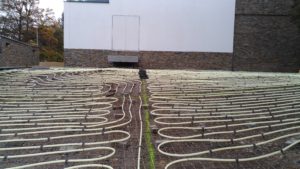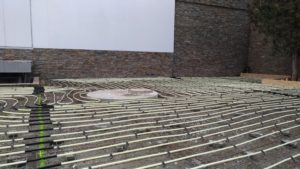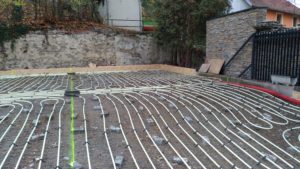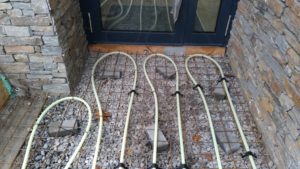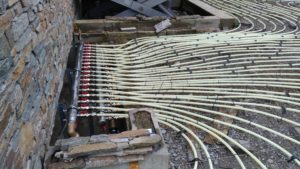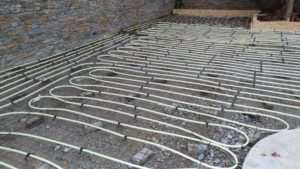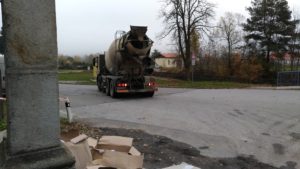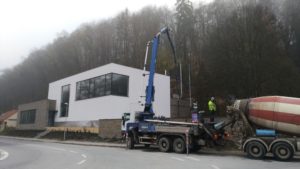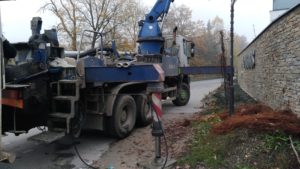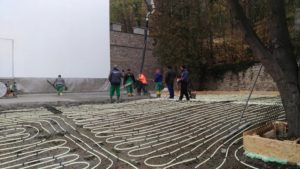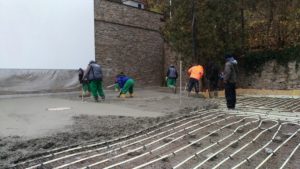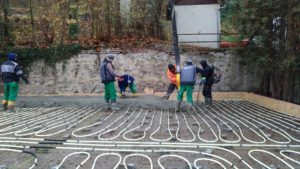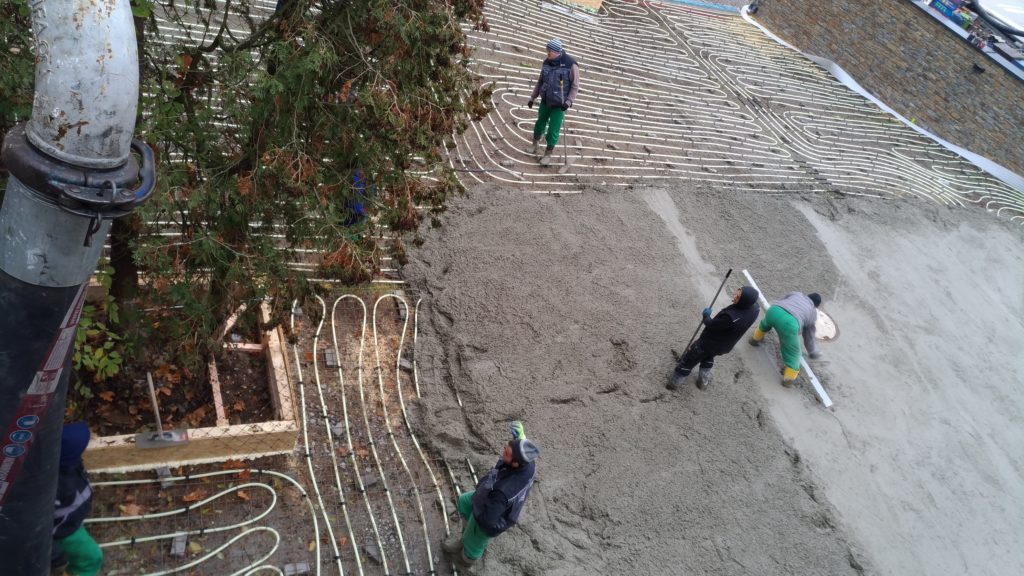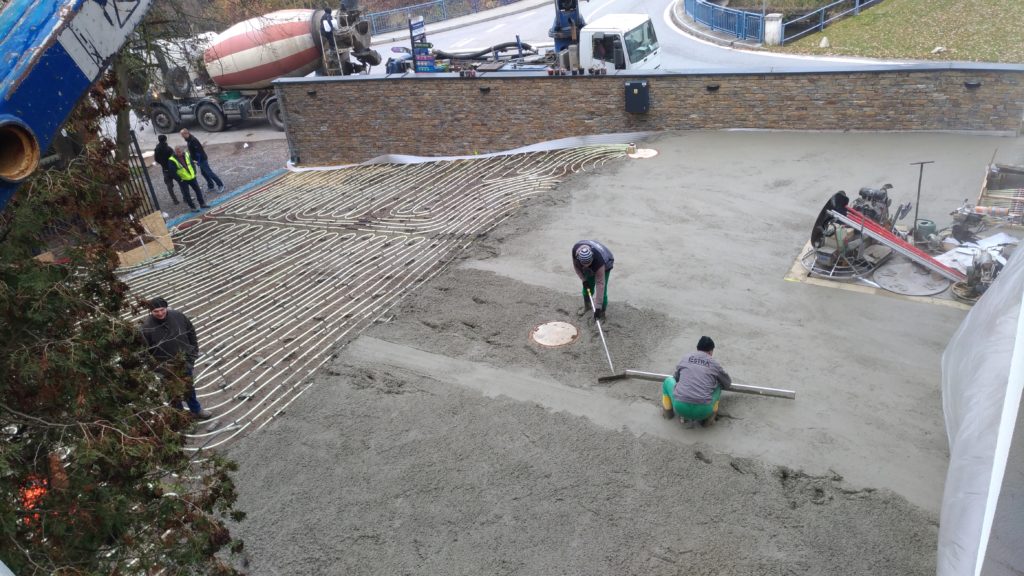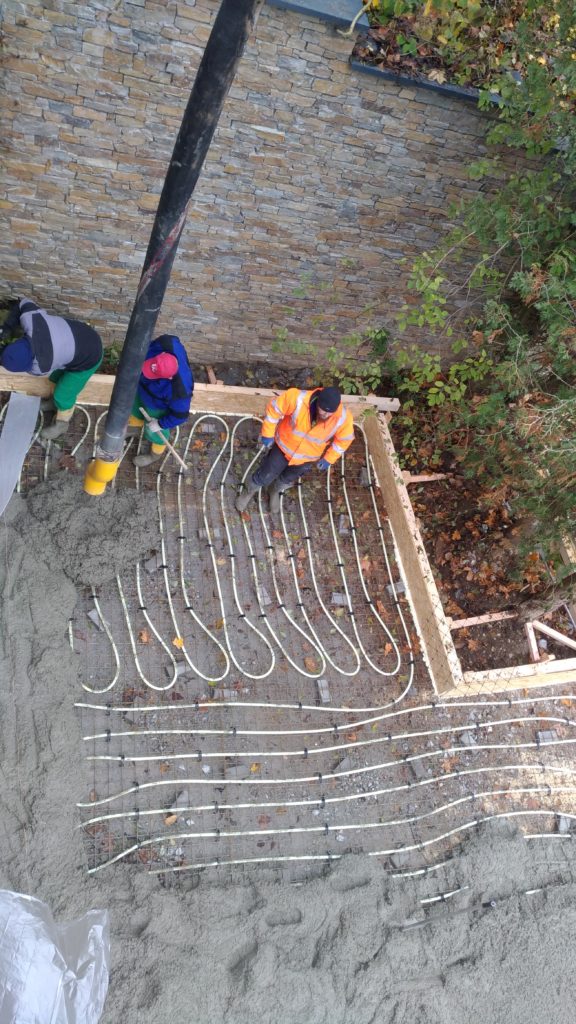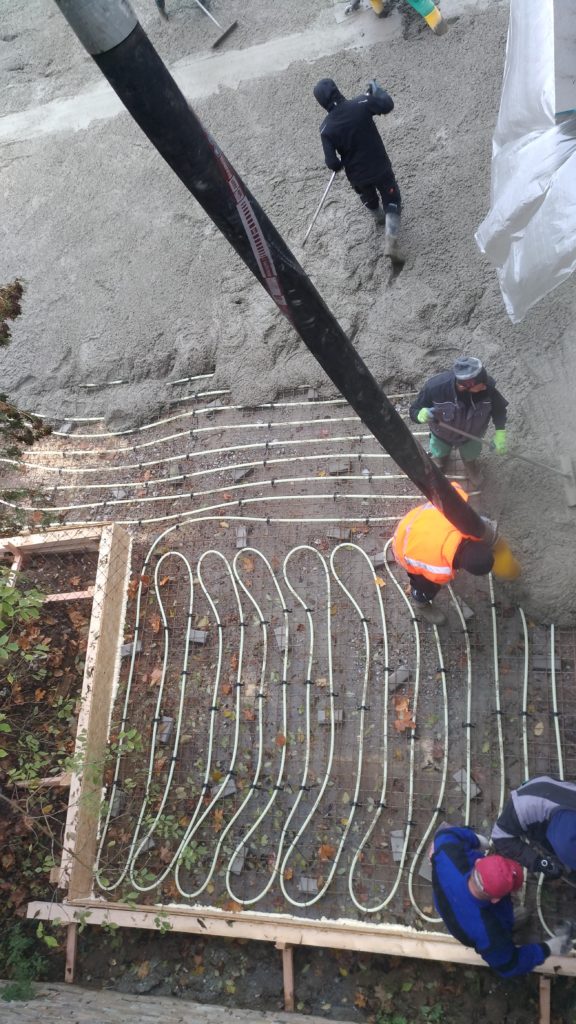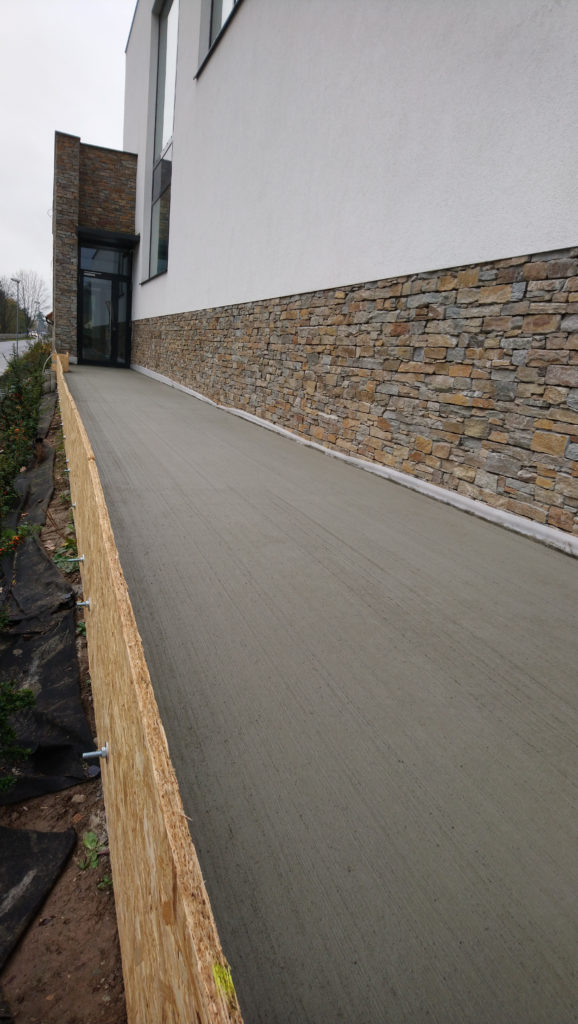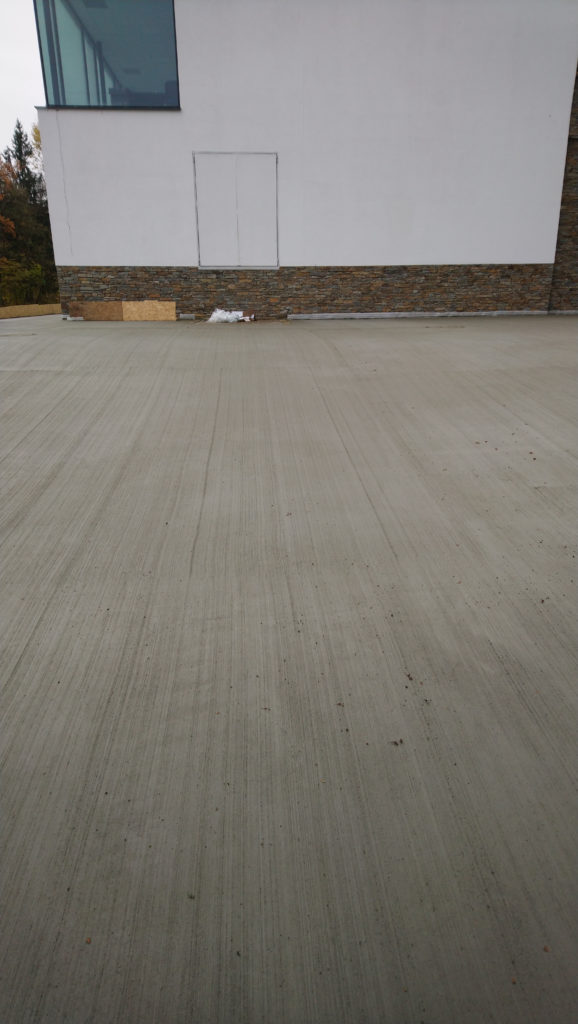Our second datacentre DC2, which we call “Bunker”, is basically finished. Inside, rather minor construction work is underway to prepare the building for normal operation. We are only waiting for the papers to be approved.
(R)evolution datacentre
The WEDOS 2 datacenter is designed from the ground up to house more than 10,000 servers cooled in large oil baths. Oil, unlike air, dissipates heat much better and allows a whole new level of hardware cooling that is incomparable to air.
Since we started getting serious about oil cooling in 2013, we haven’t encountered any significant drawbacks besides the stickers peeling off. Server components have a longer life, lower failure rate and can withstand much higher temperatures. No known malfunctions. And the temperatures? We have tested 58 degrees warm oil.
In addition, the heat can be further processed. The heat is removed from the oil bath by a water circuit, which can transport it over longer distances via heat exchangers.
Heat “in liquid form” with a temperature of over 40 degrees is well usable. For domestic water heating, for heating or heating a swimming pool. It is relatively easy to transfer tens of kilowatts of heat through water and a relatively small pipe is all that is needed. In our case, the pipes are up to 110 mm in diameter and we can cool the planned 300 kilowatts every hour. If you air cool servers, most servers and components (hard drives for example) have problems at temperatures around 30-33 degrees (honor the exceptions with certification to 40 for example). And to remove 300 kilowatts of heat through the air can mean hundreds of thousands of m3 of air every hour, and for that you need pipes several meters in diameter (not mm like water/oil).
To prove this concept, we decided to transfer the heat from DC2 to the city pool – an outdoor swimming pool that will use it all year round. Of course, for any measurable effectiveness, we’ll have to rent you a few thousand servers first 🙂
Before we fill thousands of servers…
We prefer not to plan the launch of DC2 anymore, as has been dragging out both the construction and the paperwork around it. But I guess that’s always the case when you’re building something so huge and technologically unique. On the other hand, hopefully we are ready, so next year we will definitely start test operation.
A test run with a few hundred servers won’t do much to the temperature in a city pool, so we have two smaller test phases ready to go first.
The offices and conference room have underfloor and wall heating. This is connected to the heat exchanger from the data hall. It’s hundreds and hundreds of meters of pipes in the floor and in the walls. We can heat a building with a few dozen servers without having to deal with shafts and air ducts. We already use warm air to heat the DC1, but it has a number of disadvantages (compared to liquid cooling, of course).
Another use of waste heat is the heated car park, which we have now completed. This will make maintenance easier for colleagues in winter and get rid of waste heat in the cold months. We will also get interesting numbers for the future. Maybe we will find that sidewalks or roads in cities could keep oil datacentres like ours free of snow and ice.
Concreting the heated parking lot
And how do you build such a test parking lot with a cooling circuit for the heat of oil-cooled servers? Well, basically like underfloor heating. All you need is 2 km of pipe and reinforcing steel.
From the roof of the server room, I can’t believe it’s over 2 km of pipes 🙂
The heating engineers then pressurised the entire circuit with air to make sure there was no hole. When they were sure everything was ready, we ordered 8 “mixers” with C30/37 xf4 concrete (and additional fibers) and the concreters started pouring.
And a view from the roof of the server room of the concrete workers.
After the concrete was finished, the concrete workers waited for the concrete to set so that they could level and grind it and also cut it (make expansion lines). Without it, there is a risk of cracking in the future. Time is ticking and so is the night.
The next day the concrete looked like this:
We will add photos with finished expansion joints.
Now the concrete will take a month or more (due to the low temperatures) to cure and then the expansion joints will be filled with flexible grout and the whole surface will be sanded and painted with resin in the spring.
After a long time we have another bigger event behind us. We’ve been missing the concrete pour 🙂
We will still be pouring concrete for the second parking lot and the foundation for the fence. Since we want to make sure it is done to the highest quality, we will probably continue at the end of winter.
We are slowly approaching the point where we have used 2,000 m3 of concrete.
Now we just need to paint the right signage and my colleagues will have a place to park. The company’s electric car will also have its own parking space.
By the way, if you would also like to park here one day, we are still looking for more colleagues😉




